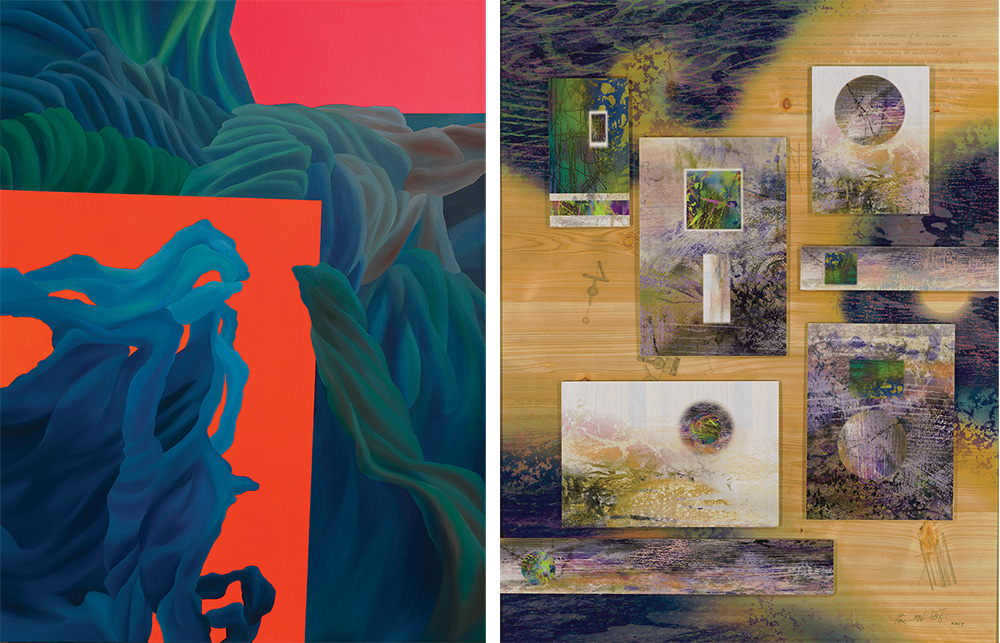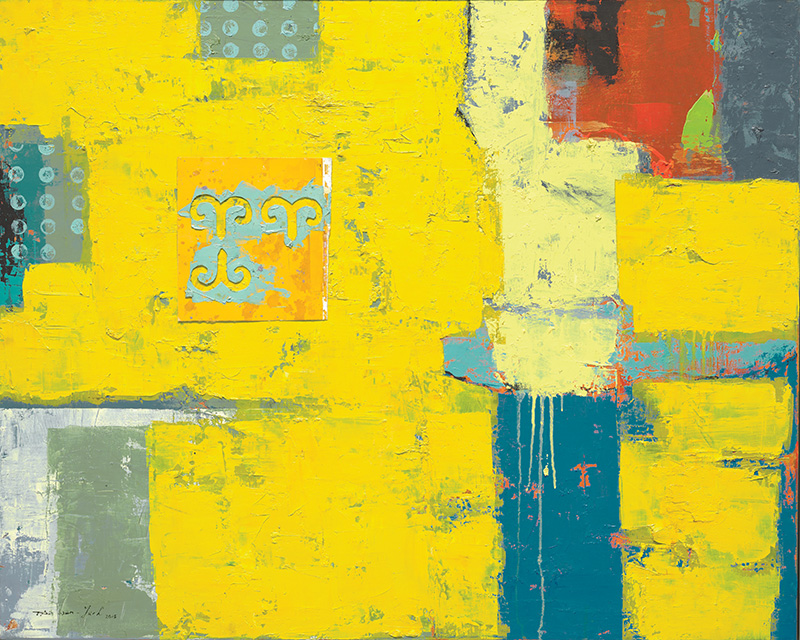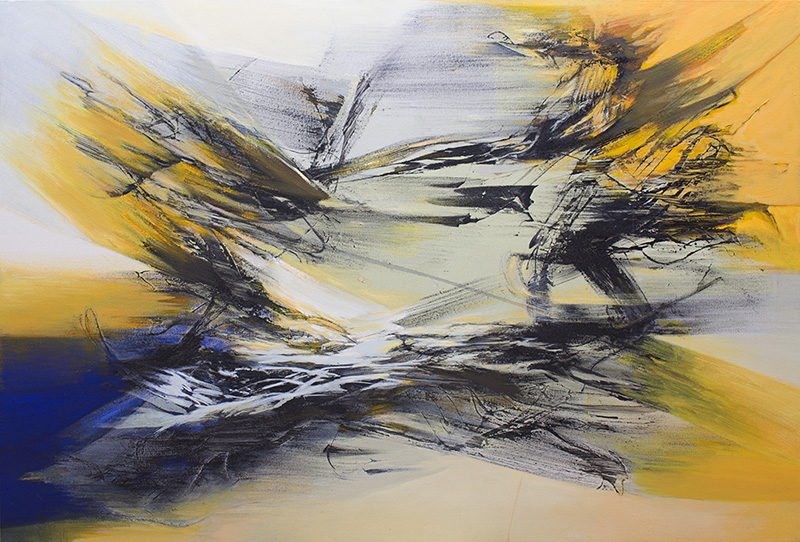ART-PRESENTATION: Shifting Momentum
 The group exhibition “Shifting Momentum” presents the development of the constantly changing abstract art in the Taiwanese art world, from the 1980s to today, featuring fifteen abstract paintings and mixed media works by twelve mid-career and established Taiwanese artists with artworks that are culturally rooted in the East, aiming to celebrate Asian Art
The group exhibition “Shifting Momentum” presents the development of the constantly changing abstract art in the Taiwanese art world, from the 1980s to today, featuring fifteen abstract paintings and mixed media works by twelve mid-career and established Taiwanese artists with artworks that are culturally rooted in the East, aiming to celebrate Asian Art
By Dimitris Lempesis
Photo: Taipei Cultural Center NY Archive
Influenced by Western modernism, artists address Eastern culture, philosophy, and traditions in subjects like chi (energy flow), ink calligraphy, and Han Dynasty tomb bricks, the works in the exhibition “Shifting Momentum” span a wide range of techniques, styles, and intentions, which has been the kind of self-analysis that required a balance between the rational and the intuited to bond artists in this frequently shifting art domain. On presentation are works from eight Taiwan based artists: Ming-Xi Chang, Yu-Ju Chen, Bor-Jou Kuo, Shiou-Ping Liao, Wei-Min Lin, Yung-Jen Liu, Rock Chin-Yuan Shen and Wen-Yueh Tao, along with four United State based Taiwanese artists: Chung-Fan Chang, Su-Li Hung, Shiao-Ping Wang and Chi-Hung Yang. Also on presentation are on present works by: Lucy Glick and Robert Motherwell from the Permanent Collection of the Noyes Museum of Art of Stockton University. Abstract Art is a tradition rooted in the West and did not arrive in Taiwan until some 40 years after it first appeared abroad. The artistic movements of Fauvism and Cubism that emerged in the 1900s jointly paved the way for the birth of Abstract Art. The former granted freedom to an artist in the use of color and the latter in the concept of form. The art theorist and painter Wassily Kandinsky is credited with creating the world’s first completely abstract works in 1910. As the abstract style began to influence more artists in the West, those in Japan also began to take note, as the country was opening up to Western culture and ideas more deeply than most of Asia at the time. In turn, artists in Taiwan, which maintained close links to Japan, began to take an interest in abstract art in the 1950s. The rich cultural legacy of painting in ink has been a double-edged sword for local abstract artists, however, as it has taken a long time for viewers to accept drastic changes to the tradition. In the highly ideological environment at the time, it was not only the government that was wary of such a revolutionary style, but in the mostly closed society, the general public could be harsh on such artists, often labeling their works nonsensical. Still, as a new artistic development, abstract art had its allure, and most of Taiwan’s painters had attempted to create works in an abstract style by the 1960s. In the 1970s, Abstract Art did not figure as prominently as previously. In part this was due to Taiwan’s political setbacks in the international community, events that led to the rise of cultural nativism. By 1971 the Republic of China was no longer a member of the United Nations and the end of that decade saw the severance of diplomatic ties with the United States. As a result, an inward-looking trend emerged in society and influenced the development of literature and fine arts. Taiwan saw another for the development of Abstract Art in the 1980s as an increasing number of artists returned home from studying abroad. Abstract Art received growing attention on the island when the National Palace Museum, the most important museum in Taiwan, decided in 1983 to acquire abstract artist Richard Lin’s “Painting Relief Diptych”, which became the first contemporary piece of artwork included in its collection. Today, artists from Taiwan have been making their mark abroad for decades.
Info: Curators: Bor-Jou Kuo and Chung-Fan Chang, Kramer Hall, Noyes Museum of Art of Stockton University., 30 Front Street, Hammonton, Duration 5/4-6/6/18, Days & Hours: Mon-Fri 8:30-16:30, Sat 10:00-16:00, www.tpecc.org


